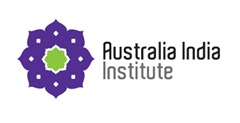 I must say, I am a devoted follower of Hand/Eye. Their blog is an essential part of my reading diet, and I have just finished reading the Summer issue of the print magazine. The stories provide a powerful testament of the passions evoked by traditional craft practices. And the images offer an extraordinary feast of colour and texture. It is able to capture a broad range of craft development projects from across the world, even including countries from the minority world, like the USA.
I must say, I am a devoted follower of Hand/Eye. Their blog is an essential part of my reading diet, and I have just finished reading the Summer issue of the print magazine. The stories provide a powerful testament of the passions evoked by traditional craft practices. And the images offer an extraordinary feast of colour and texture. It is able to capture a broad range of craft development projects from across the world, even including countries from the minority world, like the USA.
It is sometimes uneasy reading. The situation with traditional craft is often quite fragile – see the article about what happened to embroidery during the Taliban regime, and how Kandahar Treasures is trying to restore it. Craft practice, like languages and biological species, seem under thread by a homogenising world. If nothing else, Hand/Eye demonstrates the richness that is being lost as we become more urbanised and digitised.
Generally, the magazine advocates for the preservation of craft tradition through product development – ‘design as a tool for development and income generation.’ This does leave many questions to be answered:
- What happens when it is the artisans themselves who want to abandon their craft?
- How does the commodification of craft for foreign markets affect the meaning of craft traditions?
- If external designers are involved in product development, what are the terms of their collaboration?
- How can traditional craft adapt to the changing patterns of consumption, particularly the move towards more virtual goods, such as apps and Facebook?
These are the kinds of questions that academics often like posing, as a critique of naive liberalism. I have great admiration for those who dedicate their lives to sustain and celebrate distinctive ways in which we make beauty from our world. But to extend the reach of this work, it seems important that we do find a safe place to ask the hard questions. The Sangam Project is one way of attempt to do this.


